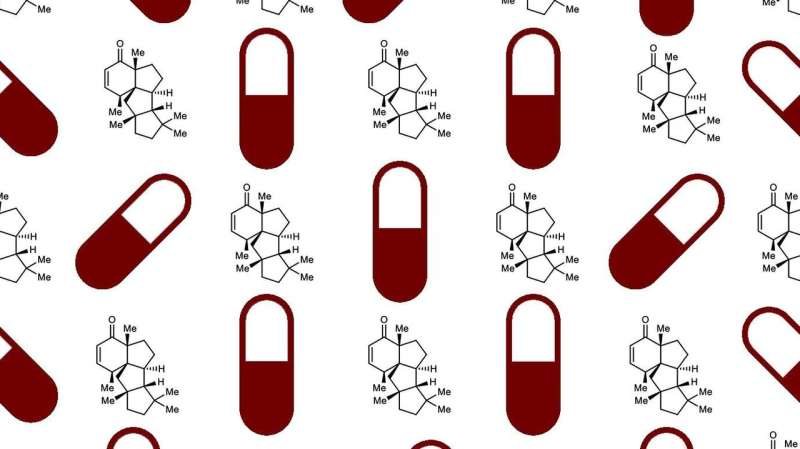Scientists design better method to build molecules that could be drugs—in half the steps

Pharmaceutical chemists have a trick when they're designing a drug and want to make it easier for the body to take up without metabolic side effects: they might add a quaternary center—a carbon atom bonded to four other carbon atoms. The trouble is, such centers are often extremely hard to synthesize.
A new study by University of Chicago chemists, however, offers a new approach that could significantly cut the time and effort needed to make such molecules, particularly for those that contain several such centers. Published April 25 in Nature, the breakthrough cuts the number • of steps needed to make a molecule rich in quaternary centers in half.
Chemistry is advancing all the time, but just coming up with new molecules for greener products or better drugs is not enough to move those discoveries to the real world—manufacturers also need to be able to synthesize them efficiently. Some molecules need dozens of rounds of being combined with other chemicals and catalysts in order to reach their final state.
Normally, once chemists have identified a molecule they wish to synthesize, they'll work backward from the final structure to figure out what steps could be used to build it. But it's not a simple or straightforward process; there are many combinations of chemicals and steps that could make any particular molecule. "It's like a chess game. You want to think about which moves will get you there fastest, with the fewest sacrifices," said study co-author Scott Snyder, professor of chemistry and an expert in designing new ways to make important compounds.
Snyder and his team focused on a group of natural chemicals rich in quaternary centers. The team wanted to test a chess-move strategy that would begin by building one critical quaternary center first—and then use its special properties of being able to boost reactivity and make other reactions more efficient to finish building the rest of the molecule.
This idea turned out to be the key, and they were able to make their target molecule in just 13 steps: far fewer than a previous attempt that required two dozen.
Going forward, Snyder said, he hopes this is a model for thinking about how to make molecules with lots of quaternary centers—as well as other molecules with challenging constructions.
"I think we've reached the point in the field of chemistry that if we had enough time and enough money, we could make any molecule we could dream up. But that wouldn't mean we would make it without tremendous waste, or tremendous cost," Snyder said. "One of our goals is to find new strategies to efficiently make molecules, especially societally important, complex ones like these with quaternary centers, on a large scale."
More information: Pengfei Hu et al. Quaternary-centre-guided synthesis of complex polycyclic terpenes, Nature (2019). DOI: 10.1038/s41586-019-1179-2
Journal information: Nature
Provided by University of Chicago




















